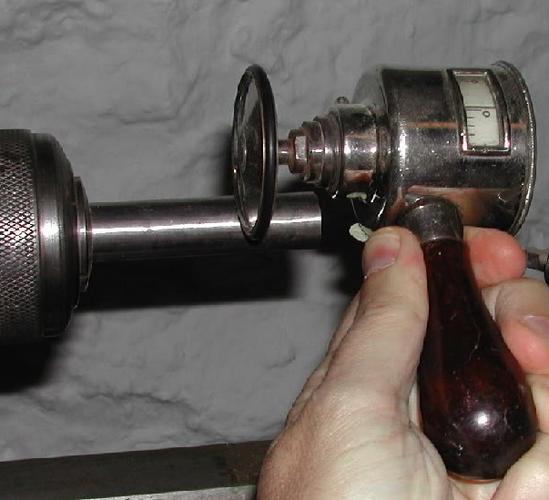Results 11 to 13 of 13
Thread: Chipping of blade from buffer.
-
05-07-2014, 07:51 AM #11

Thanks again everyone for all the tips. I ran a new batch of restores through the buffers with no issues. Thank god since my first stubby was included.
Razor rich, but money poor. I should have diversified into Eschers!
-
05-07-2014, 12:19 PM #12Senior Member



- Join Date
- Apr 2008
- Location
- Essex, UK
- Posts
- 3,816
Thanked: 3164
As far as I know, regarding Surface Feet Per Minute (aka sfpm, sf/m, sfm) the rough rule of thumb is that the sfpm = 1/4 diameter of the wheel x RPM of the spindle, thus an 8" wheel on a machine rotating at 3,600 rpm at the spindle will be 7,200 or thereabouts ((8/4)x3600). So a 6" wheel would have a sfpm of 5,400 and a 4" wheel 3,600.
Obviously this is just a rough and ready guide, as the outer perimeter of the 4" wheel must spin somewhat faster than the spindle, which is an altogether thinner diameter in cross-section. It works well enough, though.
I may be totally wrong of course, but I have used this rule of thumb for many years with no mishaps - no overheating, no ruined tempers, no heat discolourations, no chipping of the blade, etc, etc, etc.
In other words, on the same spindle rotating at the same speed, a larger wheel spins faster at its surface edge than a smaller wheel - a handy way of controlling sfpm buffer speed. I use a stepped pulley system to enhance the effect, using larger/smaller pulleys on the motor connected to smaller/larger pulleys on the buffing arbour.
Which leads to a little puzzle, the closer we get to dead centre of the spindle the slower the sfpm, so one would expect to find a zero speed at the exact centre of rotation. But - this is not the case, as even an elemental particle spins around its own nucleus...
In the old days (this gizmo has patents from 1901 - 1904 on it, pic courtesy of Practical Machinist) you had a hand-held device (a 'cut-meter') to tell you the spindle speed:

Oh for the simple life...
Regards,
NeilLast edited by Neil Miller; 05-07-2014 at 06:00 PM. Reason: correction
-
05-07-2014, 07:38 PM #13

That's a really cool looking tool.
Razor rich, but money poor. I should have diversified into Eschers!


 18Likes
18Likes LinkBack URL
LinkBack URL About LinkBacks
About LinkBacks






 Reply With Quote
Reply With Quote